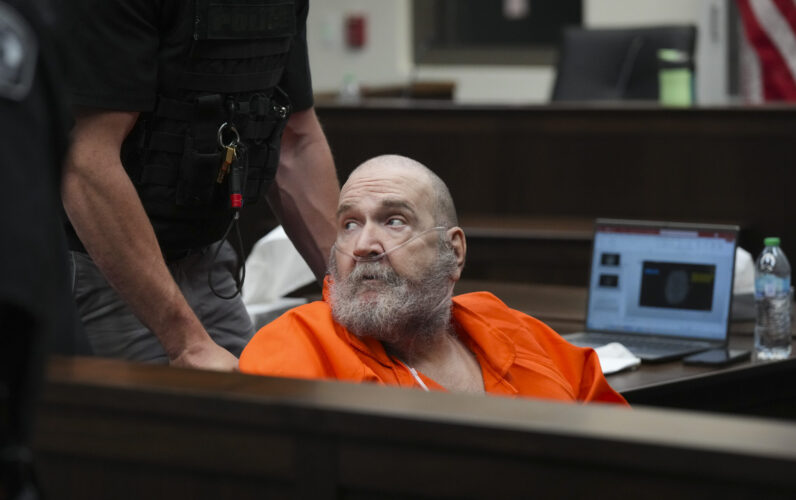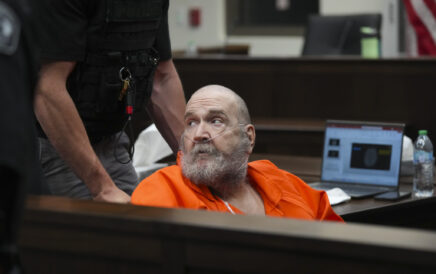A state evaluator says Ralph Menzies is too ill with dementia to be executed
The same psychologist found Menzies competent last year, but his new report points to decline

Bethany Baker, The Salt Lake Tribune
Ralph Menzies appears during his commutation hearing before the parole board as he petitions to stop his execution by firing squad, seen here at the Utah State Correctional Facility in Salt Lake City on Wednesday, Aug. 13, 2025.One of several reports prepared for a Utah judge draws a conclusion that convicted killer Ralph Menzies is “not competent to be executed” for the 1986 murder of Maurine Hunsaker.
The finding doesn’t definitively answer the question of whether Menzies, 67, will be put to death for the crime. The judge will make a determination on legal competency after a court hearing expected to last several days next month.
The U.S. Supreme Court has ruled a person cannot be put to death without a rational understanding of the reason for the penalty, saying that would amount to cruel and unusual punishment.
In an evaluation dated Nov. 17 and publicly available in Utah court records for a time Friday, forensic psychologist Michael P. Brooks wrote that “Mr. Menzies is unaware of the crime for which he is convicted, the parameters of the case (e.g., victim’s identity, specific acts he was found to have committed, etc.), the capital nature of the sentence he received, or how the punishment will be carried out.”
Brooks, an employee of the Utah Department of Health and Human Services, was ordered by the court to conduct an independent examination. He previously concluded that Menzies was fit to receive the death penalty, testifying in November 2024 that Menzies “knows that the ‘state wants to kill me because I killed a person and killing people is wrong.'”
For the new evaluation, the psychologist met with Menzies on Oct. 20 and Nov. 12, for 70 minutes both times. In one of the sessions, Menzies asked, “why would they want to kill me?”
“I asked after his understanding of the crime for which he had been convicted and the legal proceedings to this point, but he merely shook his head,” the 30-page report says.
A spokesperson for the Utah Attorney General’s Office, which is defending the state’s plan to execute Menzies, declined comment. Jennifer Moreno, one of Menzies’ attorneys, said his legal team knows about the report but did not provide comment on its conclusion.
Menzies does not have a “substantial probability” of getting to a point of restored competency, “given that there is no treatment that would improve any cognitive deficits incident to this condition,” the review found.
Menzies killed the 26-year-old Hunsaker nearly four decades ago after kidnapping her from her job at a gas station in Kearns. He tied her to a tree in Big Cottonwood Canyon, strangled her and slit her throat, prosecutors said. She was found by a hiker days later.
Menzies had been scheduled to be executed by firing squad Sept. 5. As the date drew closer, his attorneys argued his dementia had worsened.
After a judge rejected those arguments, they appealed to the Utah Supreme Court. The state’s high court called off the execution in September, ruling there was enough evidence to warrant another competency evaluation.
The court’s decision triggered the new round of proceedings, requiring reports from at least two state examiners and other evaluators commissioned by the state or Menzies’ attorneys.
For those already on death row before May 2004, including Menzies, Utah allowed a choice between lethal injection and firing squad. Menzies chose the firing squad. Now the default method of execution is lethal injection, unless the necessary drugs are not available.



